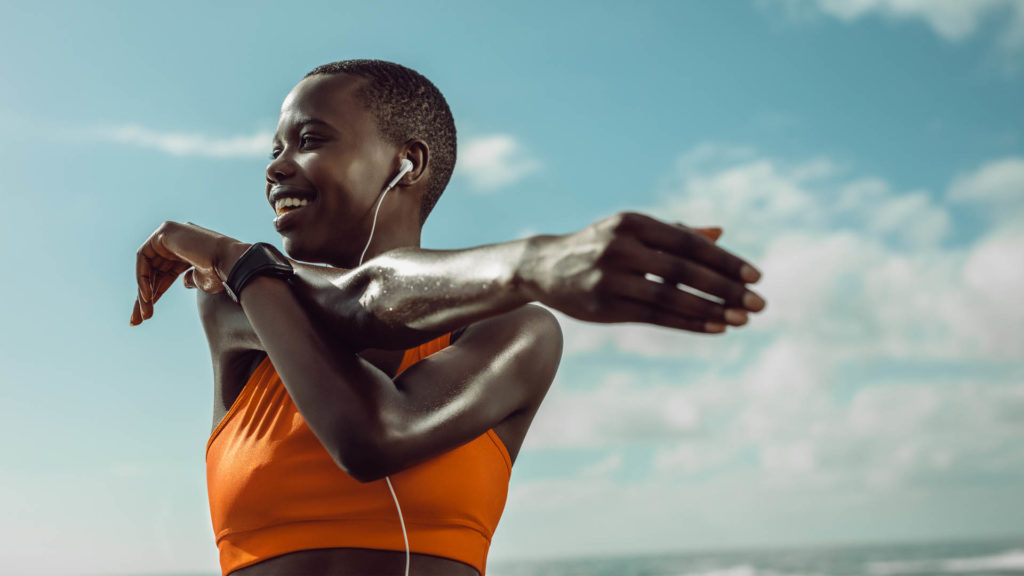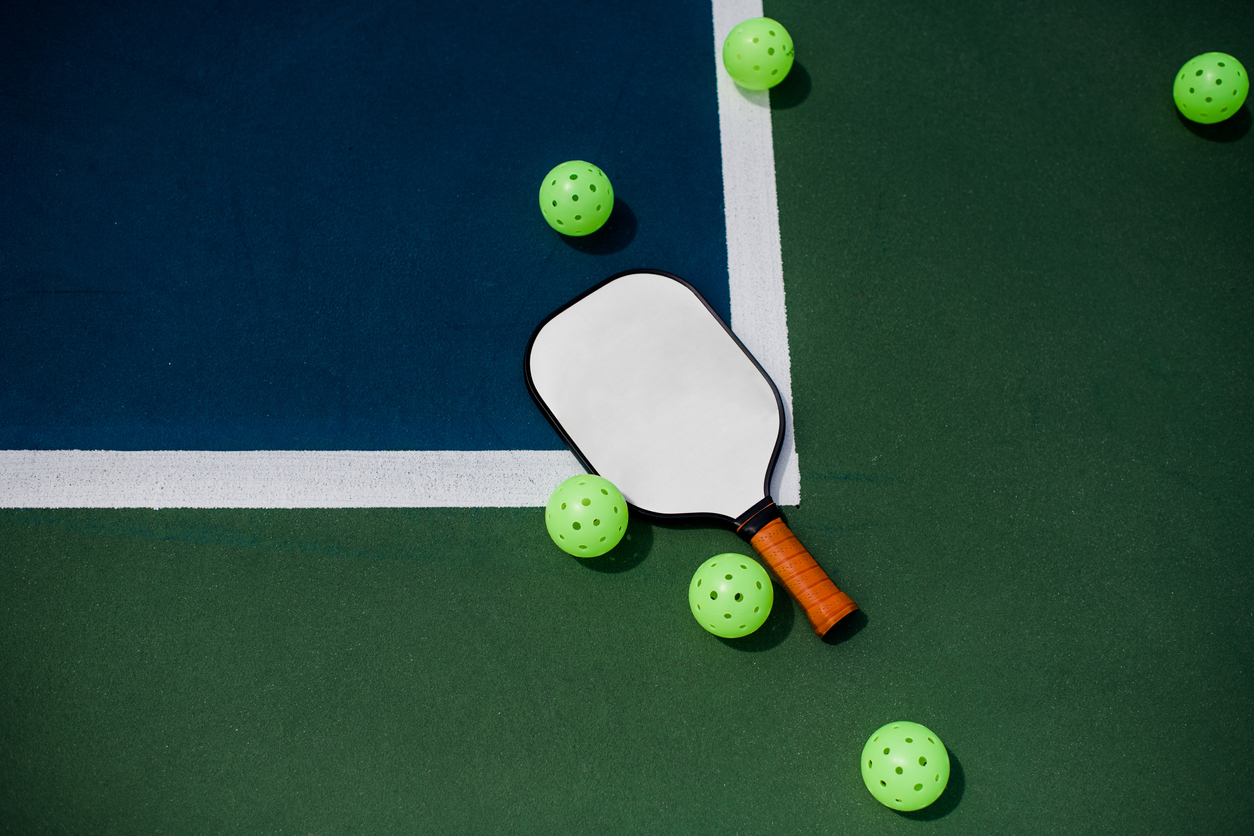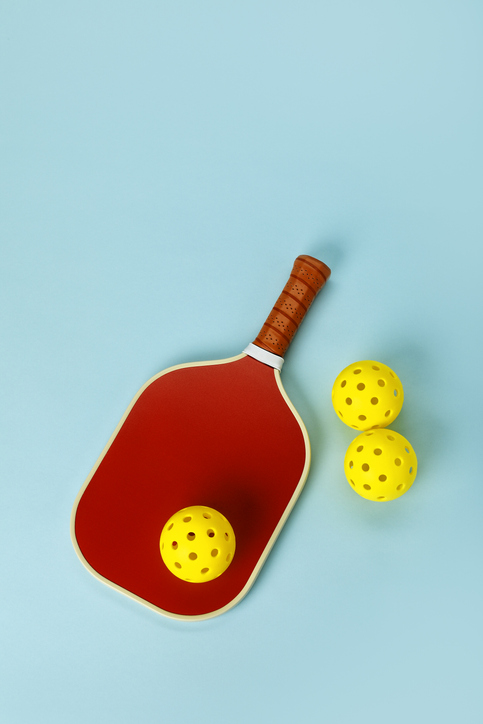
Mastering Pickleball
How to Play, Strategies, and Surprising Benefits

Pickleball has emerged as a fast-growing sport that has captured the hearts of many across the globe. Initially starting as a backyard pastime, it has since evolved into a recognized sport with leagues, tournaments, and enthusiasts spanning from young children to seniors. Its allure lies not just in its engaging gameplay, but also in its inclusive nature. Pickleball, with its simple rules and adaptable pace, welcomes players of every age and skill level, making it a favorite for family gatherings, school physical education programs, and competitive leagues alike.
Find What You Need
History and Origin of Pickleball
What Is Pickleball?
Pickleball is a paddle sport that blends elements of tennis, badminton, and table tennis. Players use solid paddles to hit a perforated ball, much like a wiffle ball, over a net. Typically played on a badminton-sized court, the sport can be played as singles or doubles. It’s recognized for its easy-to-follow rules and engaging gameplay, making it approachable for beginners while still offering a challenge for seasoned players.
How Did Pickleball Get Its Name?
The origin of the name ‘pickleball’ carries a touch of folklore. One popular account suggests the sport was named after the creator’s family dog, Pickles, who had a habit of chasing after the ball during games. However, another version credits the name to the term ‘pickle boat’, used in crew where oarsmen are chosen from the leftovers of other boats. Regardless of its true origins, the quirky name has certainly stuck and adds to the sport’s unique charm.
The Growth Of Pickleball Over The Years: From Backyard Sport To Global Phenomenon
The journey of pickleball from its humble beginnings to a global sensation is truly remarkable. Invented in the 1960s on Bainbridge Island, Washington, it started as a family activity designed to entertain kids during summer. But as neighbors and friends caught wind of this innovative game, its appeal grew rapidly. By the 1970s, it had started to spread across the U.S., with official rules being established and the first pickleball tournaments taking place. Fast forward to the present day, and pickleball boasts millions of players worldwide. With an increasing number of dedicated courts, tournaments, and even international championships, it’s evident that what began as a simple backyard game has grown into a beloved global sport
Getting Started: Pickleball Equipment and Court Setup
What Equipment is Needed to Play Pickleball?
To embark on the pickleball journey, players need a few essential items. First and foremost, a solid paddle, which is typically made of wood, composite, or graphite, is crucial. These paddles are larger than ping pong paddles but smaller than tennis racquets. Players will also need a pickleball, which resembles a wiffle ball with perforations all over it. Lastly, while not equipment per se, a net is essential. While there are nets specifically designed for pickleball, in more casual settings, players can adapt badminton or tennis nets for play.
How Does the Pickleball Court Differ from Tennis or Badminton Courts?
The pickleball court shares similarities with its badminton counterpart, spanning 20 by 44 feet. However, distinct differences set it apart. For one, pickleball courts feature a unique section called the “kitchen”, a 7-foot non-volley zone extending on both sides of the net. This means players cannot volley the ball (hit it in the air) while standing in this zone. While the court’s overall size is similar to badminton, the net is set lower, similar to tennis, standing at 36 inches on the edges and 34 inches in the middle.
Can Pickleball Be Played Indoors, or is it Strictly an Outdoor Game?
Pickleball’s versatility shines through its adaptability to both indoor and outdoor settings. While originally played outdoors, many gyms and recreation centers have adopted pickleball as a regular activity, setting up indoor courts for players to enjoy year-round, regardless of weather conditions. Outdoor courts can be found in parks, schools, and specialized sports complexes, often made of asphalt or concrete. The choice between indoor and outdoor often comes down to personal preference, with each offering its unique playing experience.
Are There Any Specific Shoes or Attire Recommended for Pickleball?
While pickleball doesn’t demand a strict dress code, certain attire can enhance the playing experience. Lightweight athletic wear, breathable and moisture-wicking, is generally recommended for comfort and ease of movement. As for shoes, it’s essential to prioritize support and grip. Tennis or court shoes are ideal, offering the necessary traction and cushioning for the game. It’s best to avoid running shoes as they are designed for forward movement and might not provide the lateral support required in pickleball, increasing the risk of ankle injuries. As with any sport, the right gear can make a significant difference in both performance and enjoyment.
Pickleball Explained: Rules and Scoring
What Are the Basic Rules for Playing Pickleball?
Pickleball’s rules are straightforward, making it accessible to newcomers. The game begins with a serve, diagonally hit from behind the baseline. The ball must clear the non-volley zone, commonly referred to as the “kitchen,” and land in the opposing diagonal court. Players must let the ball bounce once before returning the serve, and again before the serving side can return. After these two bounces, the ball can be volleyed (hit without bouncing) unless the player is in the kitchen.
How Does the Scoring System Work in Pickleball?
Scoring in pickleball is unique. Only the serving side can score points. Games are typically played to 11 points, but a team must win by at least 2 points. When serving in doubles, each player gets a chance to serve and score for their side until they commit a fault, after which the opponents get the serve. The score is announced with three numbers: the serving team’s score, the receiving team’s score, and either 1 or 2 indicating if it’s the first or second server.
What is the Difference Between Singles and Doubles Pickleball?
The primary difference is the number of players. Singles involves one player on each side of the net, while doubles has two. In doubles, teamwork, and strategy are crucial, as players need to coordinate movements, cover ground, and set up plays together. Singles demands more physical exertion from the individual player, covering the entire court. Some minor rule adjustments exist between the two, but the core principles remain consistent.
How Do You Serve in Pickleball? Are There Specific Serving Rules?
Serving in pickleball follows specific guidelines. The serve must be executed underhand, with the paddle making contact below the server’s waist. The server must have both feet behind the baseline during the serve, and the ball should be struck without bouncing. Serves are made diagonally to the opponent’s court, and only one serve attempt is allowed, except in the case of a “let” serve, where the ball touches the net but still lands in the correct service court.
What’s the Importance of the ‘Kitchen’ in Pickleball?
The “kitchen,” or non-volley zone, is a crucial aspect of pickleball strategy and gameplay. Spanning seven feet from the net on both sides, players cannot volley the ball within this zone. This rule prevents players from smashing the ball at close range, adding a layer of strategy to the game. While players can enter the kitchen, they must ensure that the ball bounces in this zone before they hit it. Many strategic plays and points revolve around clever use and avoidance of the kitchen, making it a pivotal area on the pickleball court.
Pickleball Strategies, Skills, and Common Pitfalls
How Can Beginners Improve Their Pickleball Skills?
Beginners can enhance their pickleball prowess through a mix of practice, observation, and education. Regular practice, particularly drills that focus on serving, volleying, and groundstrokes, can solidify basic techniques. Watching seasoned players, either in-person or through online videos, can offer insights into advanced strategies and movement patterns. Additionally, joining a local pickleball club or taking lessons from experienced players can provide tailored feedback and tips. It’s crucial for newcomers to be patient, as mastering any sport is a journey that comes with both triumphs and challenges.
What Strategies Are Commonly Employed in Competitive Pickleball?
In competitive pickleball, strategy is paramount. One common tactic is the “third shot drop,” where the serving team’s third shot is a soft hit into the opponents’ non-volley zone, making it difficult for them to attack. Players also use “dinking” — soft shots exchanged near the net, waiting for an opponent to make a mistake. Additionally, targeting the middle of the court in doubles can exploit communication gaps between opponents. Another strategy is to target a perceived weaker player in doubles, forcing them to make more plays.
What’s the Importance of Communication in Doubles Pickleball?
Communication in doubles pickleball is vital for coordinated gameplay. With two players covering the court, clear calls and signals prevent collisions, overreaches, or leaving areas exposed. Quick verbal cues like “mine,” “yours,” or “out” can make the difference between earning a point or committing an error. Moreover, discussing strategies between points or during timeouts ensures both players are aligned in their game plan, optimizing their collective strengths.
What Are the Common Fouls or Mistakes New Players Should Avoid?
New players often grapple with several common mistakes. Stepping into the non-volley zone or “kitchen” while volleying is a frequent fault. Serving out of turn, not serving underhand, or missing the service court can also lead to lost points. Overhitting or trying to smash every shot can result in unforced errors. New players might also not utilize the entire court, focusing shots down the middle, making them more predictable. It’s essential to recognize and learn from these pitfalls to grow as a player.
The Social and Competitive Landscape
How Many Players Are Typically on a Pickleball Team?
In pickleball, the term “team” typically refers to doubles play, where two players team up to compete against another pair. That said, pickleball can also be played as a singles game, with one player on each side. The choice between singles and doubles often boils down to personal preference, though doubles is quite popular for its dynamic and communicative gameplay.
How Long is a Typical Pickleball Match Compared to Other Racket Sports?
The length of a pickleball match can vary based on players’ skill levels, game intensity, and whether it’s a casual game or part of a structured tournament. On average, a game played to 11 points (with a win by two margin) can last anywhere from 15 to 30 minutes. Compared to other racket sports like tennis, which can stretch for hours, or badminton games that typically last 20-40 minutes for singles, pickleball matches are relatively shorter. This shorter duration makes pickleball matches highly engaging and allows players to participate in multiple games in a session.
Are There Any Notable Pickleball Tournaments or Championships?
Absolutely, pickleball has grown from its backyard roots to a sport with a bustling competitive scene. The USA Pickleball National Championships is one of the most prestigious events on the calendar, drawing top players from across the country. Other significant tournaments include the US Open Pickleball Championships and the Tournament of Champions. As the sport continues to grow in popularity, more regional and international tournaments are emerging, giving players of all levels opportunities to showcase their skills and passion.
How Can One Get Started with Pickleball in Their Community or Locality?
For those keen to dive into the world of pickleball, several avenues can lead to the court. Many communities now have local pickleball clubs or groups that organize regular play sessions, lessons, and events. Checking local recreational centers or gyms can be a good starting point, as many have incorporated pickleball into their roster of activities. Joining online platforms or social media groups dedicated to pickleball can also provide information about nearby courts, meet-ups, and other enthusiasts. For the more hands-on individual, organizing a community pickleball day or event can be a fantastic way to introduce the sport to others and build a local player base.
Modifications for Diverse Player Groups
How Do the Rules of Pickleball Ensure a Fair Game for Beginners and Advanced Players Alike?
Pickleball’s rules have been crafted to strike a balance, ensuring both newcomers and seasoned players can enjoy a competitive yet fun game. Firstly, the two-bounce rule, which mandates both the serving and receiving sides to let the ball bounce before volleying, provides a more controlled pace, particularly beneficial for beginners. This prevents rapid volleys right off the bat, giving players a brief moment to position and strategize. For advanced players, the same rule encourages the development of intricate strategies, such as the third shot drop, to gain an advantage. Additionally, the non-volley zone or “kitchen” creates an even playing field. While it prevents aggressive net play that could be overwhelming for new players, it also challenges seasoned players to refine their placement and timing, avoiding fouls in this critical zone.
The game’s scoring system further ensures fairness. Since only the serving team can score, it allows the receiving side an opportunity to rally and regain control without the immediate pressure of conceding points. This system encourages longer rallies and promotes tactical gameplay, offering beginners a chance to settle into the match, and advanced players to showcase their skills and strategies.
Are There Any Modifications to Pickleball for Children or Older Adults?
Indeed, pickleball’s flexible nature allows for modifications to cater to various age groups and skill levels. For children, adjustments can include using a smaller court, lowering the net, or even introducing softer balls to make the game more manageable and safe. These changes not only make the game age-appropriate but also ensure that young players can develop fundamental skills and enjoy the game without feeling overwhelmed.
For older adults, modifications tend to focus on safety and enjoyment rather than simplifying the game. Using lighter paddles can reduce stress on joints and muscles. Some communities even offer “senior” pickleball sessions, where the pace is more relaxed, and there’s a stronger emphasis on social interaction. The non-volley zone, inherent to the game’s rules, is particularly beneficial for older players, reducing the need for quick, aggressive net play. In essence, pickleball’s adaptability ensures that players of all ages can enjoy the sport, making modifications as needed to meet diverse needs and abilities.
The Many Benefits of Pickleball
What Are the Physical Benefits of Playing Pickleball?
Pickleball, like many racquet sports, offers a myriad of physical benefits. At its core, it provides a comprehensive cardiovascular workout, bolstering heart health and improving stamina. The dynamic nature of the game ensures that players engage various muscle groups, from the legs and core, which are vital for movement and stability, to the arms and shoulders, which power serves and volleys. Furthermore, the sport promotes agility, coordination, and reflexes as players maneuver the court, respond to unexpected shots, and strategize their returns. The frequent starts, stops, and changes in direction also enhance muscular endurance and flexibility. Notably, as pickleball can be adapted to various fitness levels, it ensures that participants can gradually build their physical prowess without undue strain, making it a versatile and sustainable fitness activity.
How Does Pickleball Contribute to Mental Well-Being and Cognitive Health?
Engaging in a game of pickleball is more than just a physical endeavor; it’s a mental exercise as well. As players strategize, anticipate opponent moves, and make split-second decisions, they hone their cognitive functions, particularly attention, problem-solving, and hand-eye coordination. This stimulation helps in keeping the mind sharp, potentially warding off cognitive decline associated with aging. Beyond its cognitive benefits, pickleball plays a pivotal role in mental well-being. The thrill of a well-played match, the satisfaction of mastering a new skill, or even the simple joy of a friendly rally can boost mood and combat stress. Regular participation can offer a routine, instill discipline, and provide a sense of purpose, all of which are vital components of mental health.
The Social Benefits of Regular Pickleball Matches and Tournaments.
One of the standout attributes of pickleball is its inherent social nature. Unlike some sports that emphasize individual performance, pickleball, especially in its doubles format, encourages teamwork, cooperation, and communication. Joining local clubs or participating in community matches offers players a chance to forge new friendships, strengthen existing bonds, and engage in healthy, constructive competition. Tournaments, be they regional, national, or even just friendly neighborhood challenges, provide a platform for broader social interaction and community-building. Players get to meet individuals from diverse backgrounds, share experiences and even learn from each other. For many, the camaraderie and sense of belonging that come with being part of the pickleball community are as rewarding as the game itself.
Ensuring Pickleball Safety and Wellness
How Can Players Ensure Their Safety While Playing Pickleball?
Safety, though occasionally overlooked in the enthusiasm of a match, remains paramount in pickleball as in any sport. For starters, appropriate footwear is non-negotiable. Players should opt for shoes with a non-slip sole, preferably designed for court sports, to minimize the risk of falls and injuries. These shoes provide the necessary grip and ankle support that the rapid movements of pickleball demand. Moreover, wearing the right footwear can prevent overuse injuries, such as shin splints or plantar fasciitis, by offering adequate cushioning and shock absorption.
Warm-ups and cool-downs, though sometimes brushed aside, are instrumental in injury prevention. Before diving into a game, players should engage in dynamic stretches and light cardio, like jogging or jumping jacks, to elevate heart rate and prepare the muscles for action. Post-match, static stretches can help in releasing muscle tension, increasing flexibility, and speeding up recovery. Beyond physical precautions, players should also be cognizant of the environment. Regularly inspecting the court for any debris, wet spots, or irregularities can preempt potential hazards. Additionally, staying hydrated, especially during hot and humid conditions, ensures optimal muscle function and reduces the risk of cramps or heat-related illnesses. Lastly, embracing the ethos of sportsmanship — respecting opponents, adhering to rules, and acknowledging one’s physical limits — can significantly enhance the safety and enjoyment of every pickleball match.
Final Thought
Pickleball, with its rich history and accessible nature, has undeniably etched its mark as a beloved sport across generations and skill levels. Its unique blend of physical rigor, cognitive challenge, and social camaraderie encapsulates a holistic experience that few other activities offer. Whether you’re in pursuit of a heart-pumping workout, a mental refresh, or a vibrant community, pickleball stands ready to deliver. So, if you haven’t already, there’s never been a better time to pick up a paddle, step onto the court, and immerse yourself in the multifaceted delights of this dynamic sport.
Content on this site is for reference and information purposes only. Do not rely solely on this content, as it is not a substitute for advice from a licensed healthcare professional or personal trainer. Aging.com assumes no liability for inaccuracies. Consult with your doctor before beginning any new exercise program.



